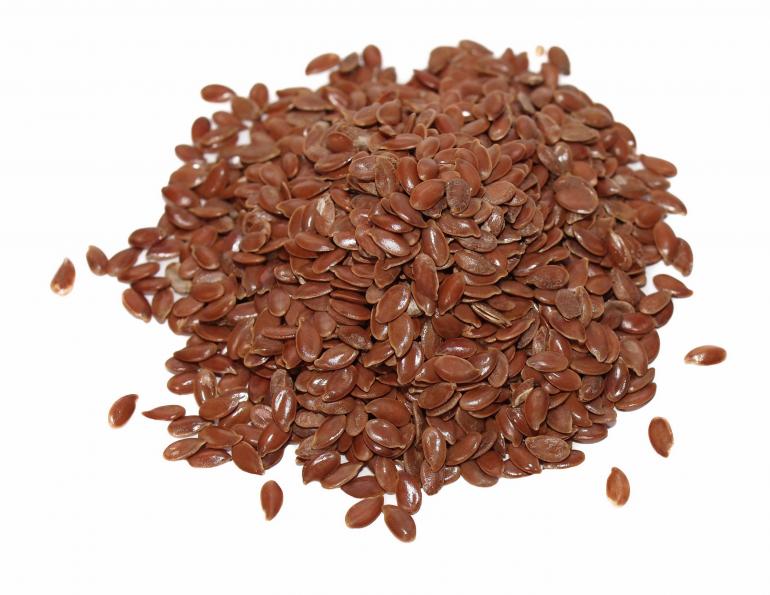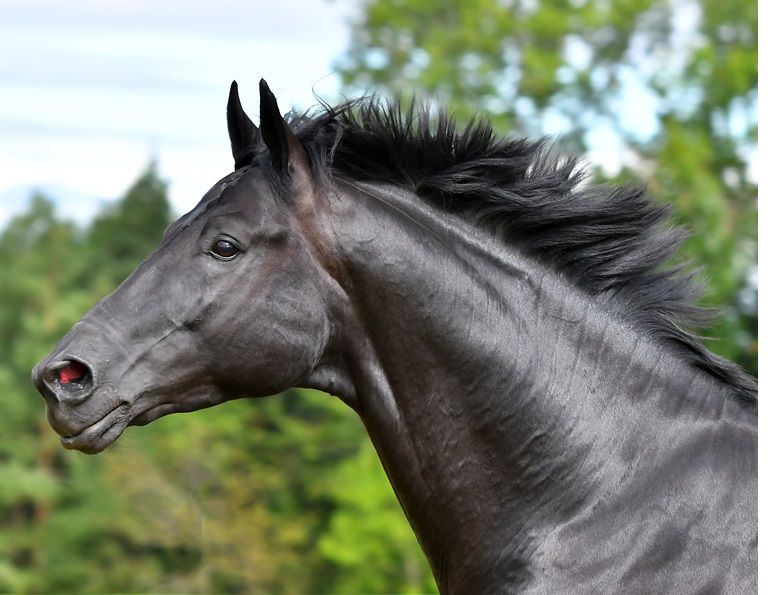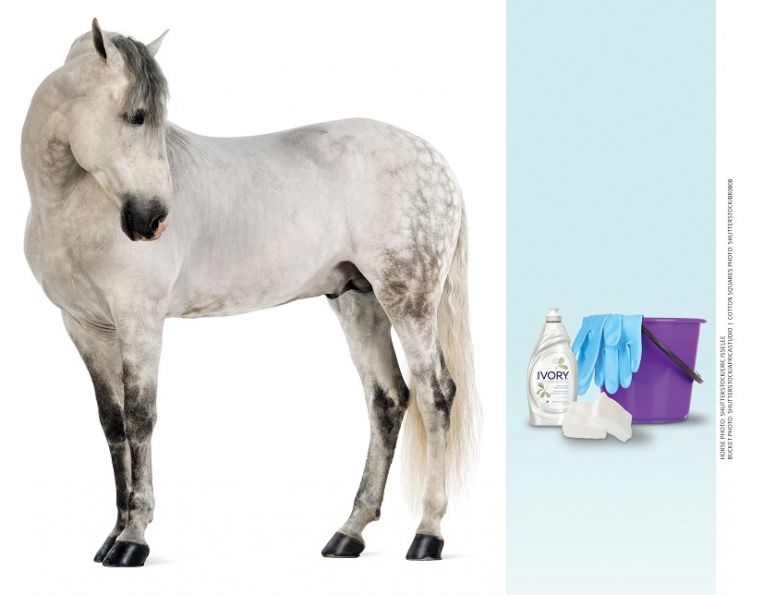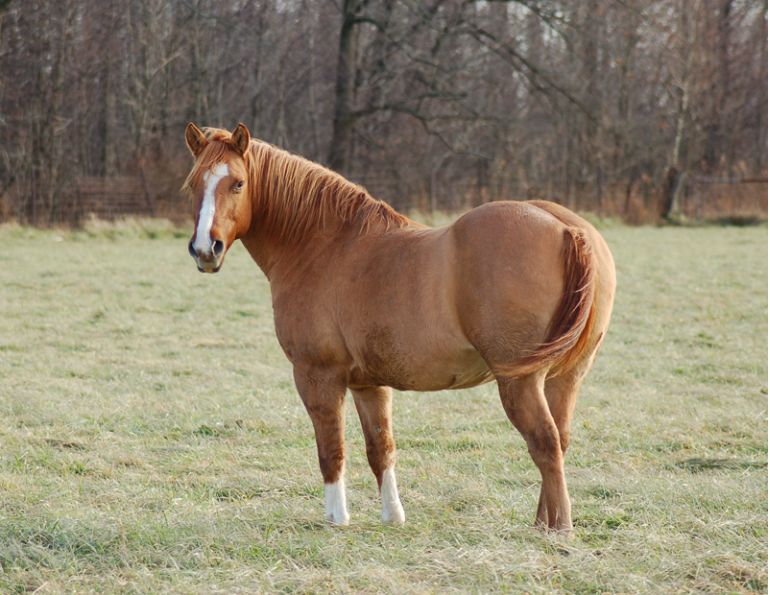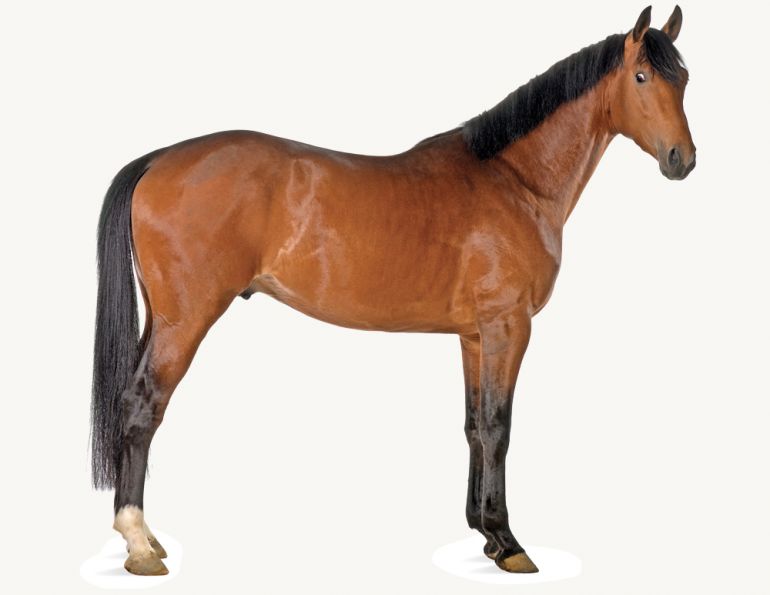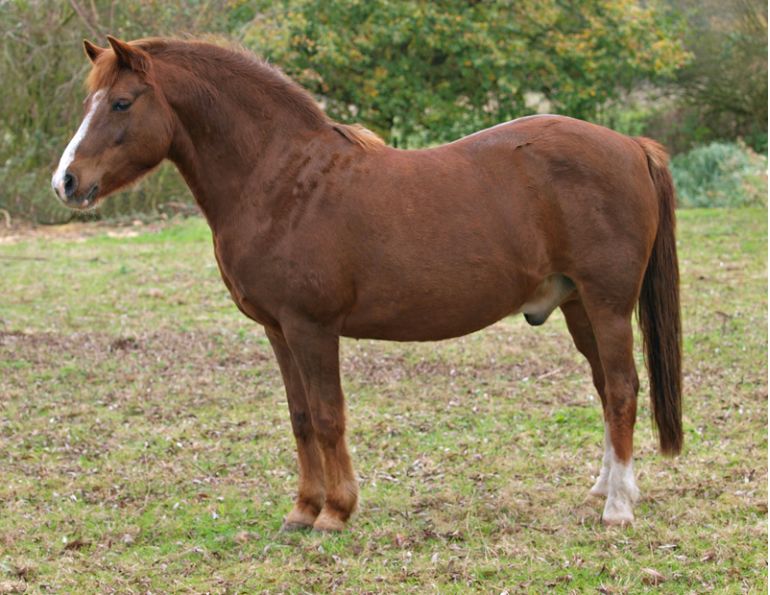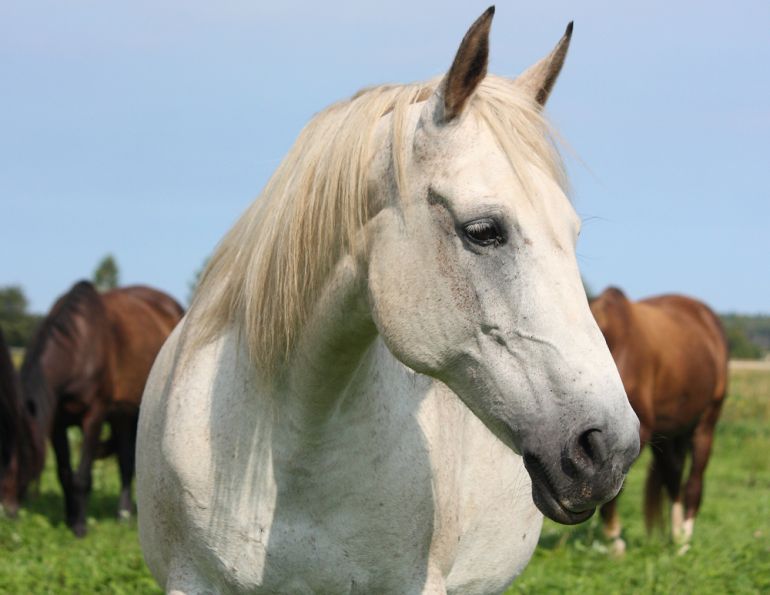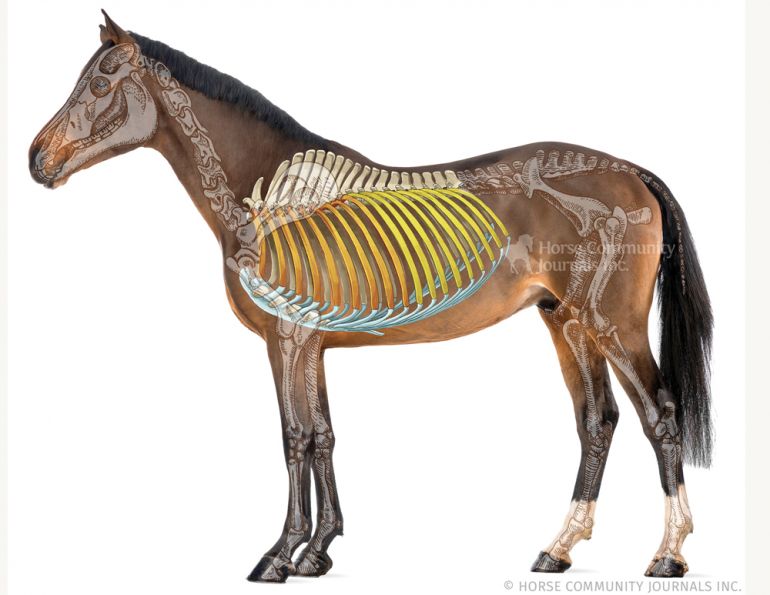By Dr. Wendy Pearson, PhD (Dr. of Veterinary Toxicology)
Recurrent Seasonal Pruritus (commonly known as Sweet Itch) is the most common allergic skin condition in horses. Horses with sweet itch experience intense itching along the abdomen, the back, mane, and tail. Sweet itch is caused by a Type 1 allergic response to the bite of insects of the Culicoides genus (the midges). And we all know – when you gotta itch, you gotta scratch! And affected horses often develop severe skin eruptions due to self-mutilation in an attempt to alleviate the itchiness.
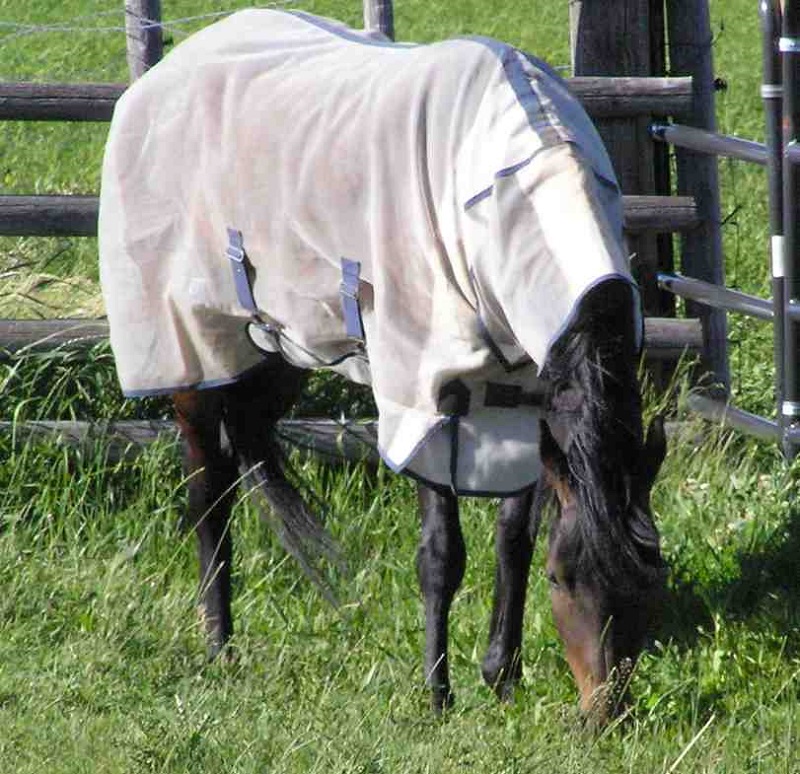
Photo: ©Montanabw/Wikimedia Commons
The incidence of Sweet Itch is hard to nail down but, depending on the geographical location, it can be anywhere from 5 to 60 percent of the equine population. A survey was conducted in British Columbia, and of the 209 horses surveyed in the south-western part of that province, the incidence was determined to be 26 percent. British Columbia has an equine population of approximately 113,000, and if this survey can be considered representative of the horse population in the province, the incidence of 26 percent translates into 29,380 horses. The incidence of sweet itch in Ontario is not known, but anecdotal reports suggest that this condition is becoming as common a summer nuisance as mosquito bites.
Usually if a horse develops flare-ups of sweet itch, the vet will recommend oral prednisolone at a dose of 400 to 500 mg daily for five days, followed by a gradually decreasing dose until symptoms disappear. A corticosteroid cream usually accompanies this treatment for the first couple of days too. But there really is no good non-steroidal long-term treatment for sweet itch, so owners of horses with this condition are frequently seeking a safe, nutritional alternative to steroids.
Related: When Horses Get Allergies
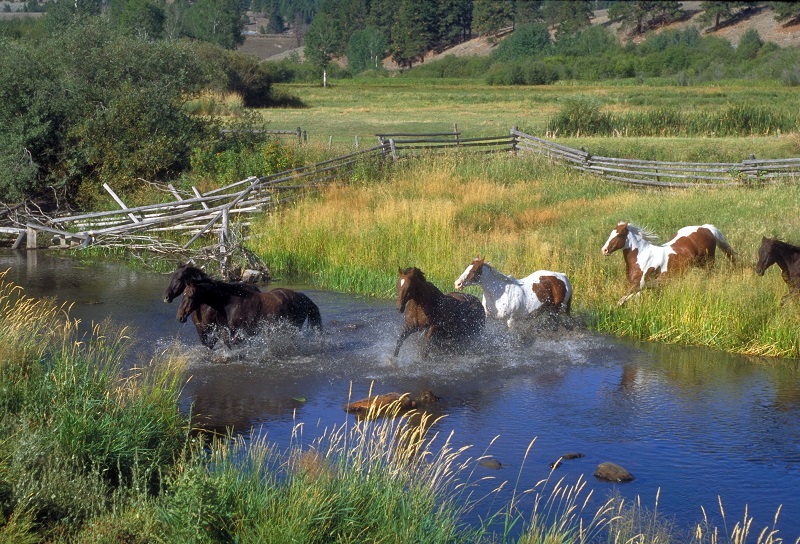
Marshy areas and ponds, and other areas of wet soil and vegetation, are breeding grounds for midge flies. Sensitive horses should be kept at least 100 metres away from these areas.
One such nutritional alternative with promise is omega-3 fatty acid. Supplementing diets with omega-3s has long been associated with general improvements in skin and coat health in horses. As early as 1966, the scientific literature was reporting an improvement in skin and coat health of horses on diets high in omega-3 fat. While the mechanism of action remains somewhat elusive, it has been proposed that this effect may be associated with the preferential incorporation of omega-3 fats into cell membranes, improving their fluidity and deformability. The other action of omega-3 fats is that they are metabolized to non-inflammatory metabolites including prostaglandins of the 1 and 3 series, unlike the more plentiful omega-6 fatty acids that are metabolized to pro-inflammatory prostaglandin E2. This general shift away from a pro-inflammatory state in horses consuming diets high in omega-3 fat should afford some protection for horses against inflammatory conditions such as that seen in sweet itch.
And in fact, this hypothesis was tested in a study at the Equine Research Centre (University of Guelph) in horses with sweet itch. Horses’ diets were supplemented with ground flax meal (500 grams per day) for 42 days; on days 0, 21, and 42 they were injected subcutaneously with Culicoides extract, saline (negative control), and histamine (positive control). The flaxseed strongly inhibited the allergic skin reaction to the Culicoides injection.
In this study, flaxseed also reduced the concentration of long-chain saturated fatty acids in the hair. As hair is composed mainly of protein and minerals, any changes in fatty acids must reflect changes in secretions that come from the skin and are deposited into the hair. These secretions form a waterproof coating that supports many bacteria (called “dermal microflora”), and some skin bacteria are known to metabolize compounds (trans-urocanic acid and histidine) that are involved in immune function. By altering the fatty acids of the skin secretions, it is possible that flaxseed altered the ability of bacteria to metabolize these compounds, thus reducing the immune response to Culicoides injection. Flaxseed was also shown to be safe in horses when fed at 500 grams/day, as there were no significant changes in any blood biochemistry or hematology values.
While this study focused on flaxseed, it is likely that any rich source of omega-3 fat would show similar benefit to horses with sweet itch. Some other sources are herring oil, krill oil, or some microalgae. Whatever the source, omega-3 fat is an essential component of a healthy, anti-inflammatory diet for horses with sweet itch.
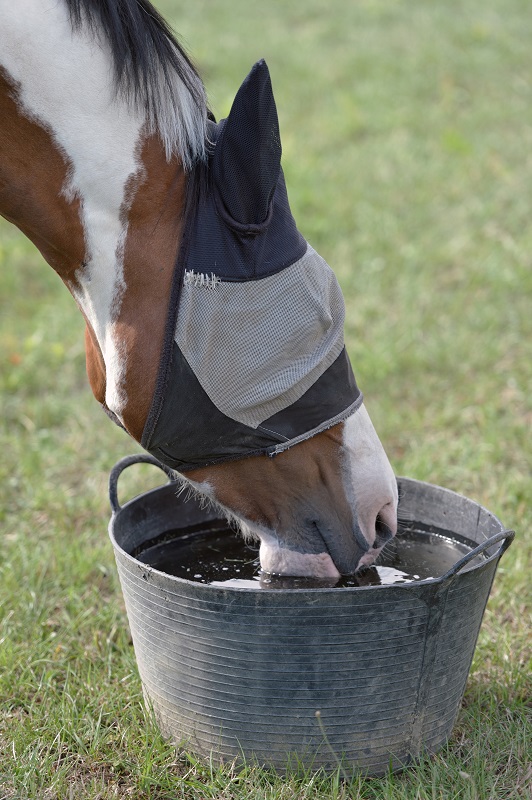
For a horse prone to sweet itch, a full fly sheet and fly mask can help provide protection during turnout. Photo: CanStock/Rogers
Related: To Rug or Not to Rug?
Main photo: Canstock/Dusan964



